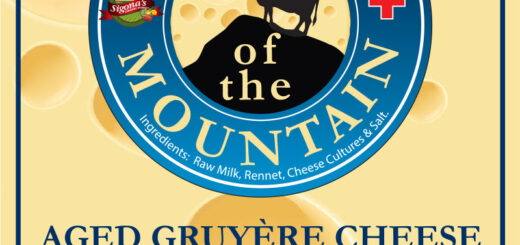Fall Into Apple Season
Fall Into Apple Season
 Fall is rolling in around the Bay Area and to us, that means it’s apple time! This time of year always floods my mind with memories from my own childhood. I grew up on an orchard in Washington state where my dad farmed Jonathan, Ginger Gold and Rome apples, a variety developed in the mid-1800s and quickly became known as the “Baker’s Buddy” because it develops a rich flavor when cooked.
Fall is rolling in around the Bay Area and to us, that means it’s apple time! This time of year always floods my mind with memories from my own childhood. I grew up on an orchard in Washington state where my dad farmed Jonathan, Ginger Gold and Rome apples, a variety developed in the mid-1800s and quickly became known as the “Baker’s Buddy” because it develops a rich flavor when cooked.
Simply mentioning apple season to me takes me back to driving bins of fruit to town with dad in the one-ton truck, picking up lunch or snacks on the way back to the farm, and catching a ride on the tractor when my brothers and I weren’t too busy playing in the dirt or building forts among the trees. Those are definitely memories I hold dear to this day.
It’s the heirloom apples though, the Black Twig, Red Delicious, Winesap, Newton Pippin and even Rome varieties, to name a few, that we anticipated all year. Heirloom apples are an absolute treasure in the world of produce – these rare apples have a unique taste and texture that just can’t be matched by today’s varieties.
Heirloom apples, much like heirloom tomatoes, are not known for their beauty. They’re often scarred, small and quickly perishable. Their makeup hasn’t been altered to beautify or prolong shelf life, because for produce to be considered an heirloom, the variety has to have been grown without being tampered with or cross-bred, from generation to generation, for at least 50 years.
Vince Gizdich, a family farmer from Watsonville, Calif., we’ve worked with for 35 years, grows many heirloom apple varieties just as they originated, whether they came about 200 years ago or just 50 years ago. Take the Red Delicious, for example.
There’s the Red Delicious you can buy at a supermarket or big box store at any point in the year, and then there’s the original, heirloom Red Delicious that comes straight from dedicated heirloom growers, such as Gizdich, within hours of harvest. This Red Delicious, a smaller, not-so-perfectly red apple is sweeter and crisp (but not hard) with a lovely perfumed fragrance that’s simply amazing for a Red Delicious. Vince’s Red Delicious apples arrived at our store late last week and will only hold fresh for about three weeks before they start to go downhill.
We’ll welcome many more varieties of heirloom apples from Gizdich Ranch throughout the fall, starting with those that arrived last week, such as the Gravenstein, Macintosh and the Newton Pippin. The Newton Pippin, a fantastic cooking apple, is the variety used in the Gizdich Ranch apple pie mix – the same mix that stars in our very own Heirloom Apple Pie gelato.
We have the mix from Gizdich Ranch delivered to our local vendor Massimo Caporale, owner of Gelato Massimo in Watsonville, where Massimo makes batches of the Heirloom Apple Pie Gelato exclusively for Sigona’s (it’s free Sept. 22-28, 2010 with your coupon when you spend $30+).
In addition to apples, Vince grows different varieties of bush berries, such as the bleeding-ripe boysenberries we told you about earlier this summer. We encourage our customers to visit Gizdich Ranch in the summer for berry picking or in September for apple picking. There are many other attractions, too, including tours, the gift shop, an antique shop, juice pressing and, of course, the bake shop…think heaping, fresh-baked berry or apple pies served up with hot coffee or just-pressed cider.
A day trip to Gizdich Ranch is the perfect way to spend a crisp fall day out and about with the family – it’s an apple season memory I’m sure the children will hang on to, just as I have with my apple season memories. Make sure to check the Gizdich Ranch website and give them a call before you go to see what’s on tap for the day.
Following is a list of heirlooms and other varieties we’ll have delivered fresh throughout the fall, so keep an eye out! Their flavor alone will keep you coming back for more.
Heirloom Varieties
 Macintosh/McIntosh: Vince has maintained the quality of the very old, original Macintosh variety – they’re smaller than most Macintosh apples coming from Canada and Washington. This variety is red and green in color with tart, tender & juicy flesh. By nature, it’s not a crispy apple, but when they’re fresh they have a refreshing snap, making them nice for eating or cooking, however when it’s cooked, it loses shape, but retains its flavor. It’s said this variety originated in Canada around the 1800s. They’re available now in our store.
Macintosh/McIntosh: Vince has maintained the quality of the very old, original Macintosh variety – they’re smaller than most Macintosh apples coming from Canada and Washington. This variety is red and green in color with tart, tender & juicy flesh. By nature, it’s not a crispy apple, but when they’re fresh they have a refreshing snap, making them nice for eating or cooking, however when it’s cooked, it loses shape, but retains its flavor. It’s said this variety originated in Canada around the 1800s. They’re available now in our store.
–
–
 Newton Pippin/Newtown Pippin: This light green apple has a distinct mottled collar (meaning a darker, rougher spot around the stem. The Newton Pippin, which is said to have originated in 1756 in Newtown, Long Island, NY, is a tart, crisp and juicy apple that’s fantastic for pies, sauces, juicing or simply eating out of hand. When cooked, it retains its shape well. They’ll be available any day.
Newton Pippin/Newtown Pippin: This light green apple has a distinct mottled collar (meaning a darker, rougher spot around the stem. The Newton Pippin, which is said to have originated in 1756 in Newtown, Long Island, NY, is a tart, crisp and juicy apple that’s fantastic for pies, sauces, juicing or simply eating out of hand. When cooked, it retains its shape well. They’ll be available any day.
–
–
 Winesap: Named for its look, the Winesap has a deep purple-red color with a semi-tart, juicy and firm flesh with a wine-like flavor. This apple, developed on the East Coast in the early 1800s, stores well and will be available in late October/early November.
Winesap: Named for its look, the Winesap has a deep purple-red color with a semi-tart, juicy and firm flesh with a wine-like flavor. This apple, developed on the East Coast in the early 1800s, stores well and will be available in late October/early November.
–
–
–
 Braeburn: This apple is yellow with pretty red highlights. It’s a harder, crisp apple that’s sweet, yet tart. It’s great in salads. It originated in New Zealand in 1952. It’ll be available in mid-October.
Braeburn: This apple is yellow with pretty red highlights. It’s a harder, crisp apple that’s sweet, yet tart. It’s great in salads. It originated in New Zealand in 1952. It’ll be available in mid-October.
–
–
 Black Twig: The Black Twig had a deep red striped skin. Its flesh is firm and tart, making it a “good cooker” as it retains its tart flavor. This variety originated in Arkansas in 1868. It’s generally a small to medium sized apple and will be available in late October/early November.
Black Twig: The Black Twig had a deep red striped skin. Its flesh is firm and tart, making it a “good cooker” as it retains its tart flavor. This variety originated in Arkansas in 1868. It’s generally a small to medium sized apple and will be available in late October/early November.
–
–
 Red Delicious: The color of an heirloom Red Delicious is striped to solid red. The original Red Delicious variety was recognized in Wellsburg, Iowa in 1880. Vince’s Red Delicious is crisp, sweet and great for lunchboxes. It doesn’t hold up well if cooked, but it stores nicely. They’re available now.
Red Delicious: The color of an heirloom Red Delicious is striped to solid red. The original Red Delicious variety was recognized in Wellsburg, Iowa in 1880. Vince’s Red Delicious is crisp, sweet and great for lunchboxes. It doesn’t hold up well if cooked, but it stores nicely. They’re available now.
–
–
 Gravenstein: The Gravenstein, a variety which hails from 19th century Europe, is moderately tart, tender & juicy. It is ideal for applesauce, eating or cooking. When cooked, it loses shape but retains its flavor. The Gravenstein is available now.
Gravenstein: The Gravenstein, a variety which hails from 19th century Europe, is moderately tart, tender & juicy. It is ideal for applesauce, eating or cooking. When cooked, it loses shape but retains its flavor. The Gravenstein is available now.
–
–
 Granny Smith: The quintessentially picturesque apple with its shiny green skin and well-known crunch. This apple, discovered in Australia in the mid-1800s by its namesake, Maria Ann Smith, is quite tart, making it good for baking and for sauces. It will keep all winter if stored properly. The Granny Smith will be available in late October/early November.
Granny Smith: The quintessentially picturesque apple with its shiny green skin and well-known crunch. This apple, discovered in Australia in the mid-1800s by its namesake, Maria Ann Smith, is quite tart, making it good for baking and for sauces. It will keep all winter if stored properly. The Granny Smith will be available in late October/early November.
–
–
Other great varieties:
 Honeycrisp: This apple, introduced in 1991 and originated in Excelsior, Minnesota at the University of Minnesota’s apple development program, is a cross between a Macoun and a Honeygold. It’s large, crisp and juicy, making for a great eating apple. This apple is available now.
Honeycrisp: This apple, introduced in 1991 and originated in Excelsior, Minnesota at the University of Minnesota’s apple development program, is a cross between a Macoun and a Honeygold. It’s large, crisp and juicy, making for a great eating apple. This apple is available now.
–
–
–
 Gala: This is an early harvest dessert apple that originated in New Zealand and was introduced to the U.S. in the 1970s. Its skin is orange and yellow with a red blush, and its flesh is sweet and slightly crisp. It’s great for snacks, salads and lunchboxes. It doesn’t do well as a cooking apple, but we won’t stop you if you try. This variety is available now.
Gala: This is an early harvest dessert apple that originated in New Zealand and was introduced to the U.S. in the 1970s. Its skin is orange and yellow with a red blush, and its flesh is sweet and slightly crisp. It’s great for snacks, salads and lunchboxes. It doesn’t do well as a cooking apple, but we won’t stop you if you try. This variety is available now.
–
–
–
Pinova: The Pinova is a newer variety that originated in Germany and has family ties to the Cox Pippin and Golden Delicious. is a yellow apple, covered with a bright pinkish/red blush. It’s a firm apple that’s perfect for eating out of hand or cooking. It has a nice balance of sugar and acid. The Pinova is available now.
–
–
 Fuji: The Fuji is a tall, greenish-yellow apple with a red blush that originated in Japan in 1962 that became the rage in America in the 1980s. It’s crisp, juicy and sweet – it’s all all-round good eating apple. However, it tends to lose flavor when cooked. The Fuji will be available in mid-October.
Fuji: The Fuji is a tall, greenish-yellow apple with a red blush that originated in Japan in 1962 that became the rage in America in the 1980s. It’s crisp, juicy and sweet – it’s all all-round good eating apple. However, it tends to lose flavor when cooked. The Fuji will be available in mid-October.













